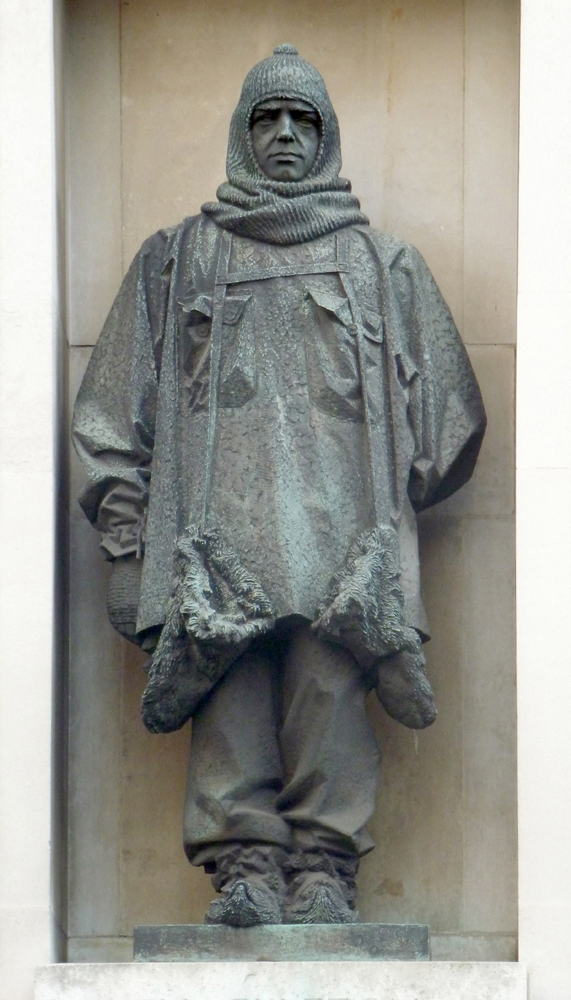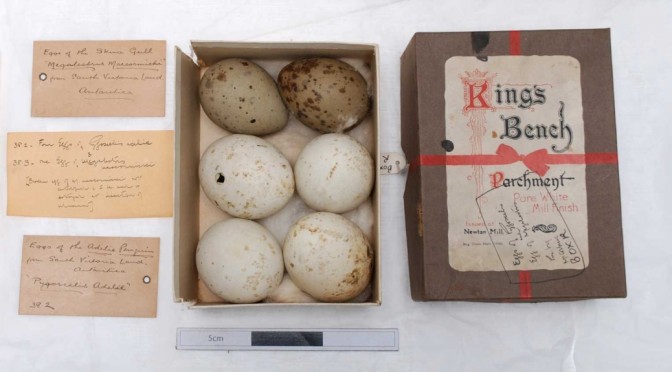A couple of years ago, I wrote a piece for this site about a series of objects from Antarctica that had been collected by the Horniman Museum and – in several cases – subsequently disposed of. I also wrote a longer essay for the Horniman’s website about the objects. In the latter piece, I noted that we had been unable to find some of the better-documented objects: several birds’ eggs donated by a person named in the registers as C. T. Colbeck (see also here). I was, therefore, delighted to receive a tweet a couple of weeks ago from my former colleague Justine Aw, saying that the eggs had been found whilst working through the Horniman’s collections following a collection review. Continue reading Captain Colbeck’s eggs
Tag Archives: L. W. G. Malcolm
Learning from the past 1: accession registers
A couple of weeks ago, I took advantage of the centenary of the departure of Sir Ernest Shackleton’s Imperial Trans-Antarctic Expedition (also known as the Endurance expedition) to publish an article on the website of the Horniman Museum (where I work as Documentation Manager), investigating the objects related to the ‘Heroic Age’ of Antarctic exploration which were once owned by the Horniman. I’ve already said something about what these objects add to our knowledge of Antarctic history, but the process of researching the article has also thrown up some valuable lessons in museum documentation, and I thought I’d share them here, in a series of posts. First, I’ll look at accession registers; then, capturing and sharing information; third, recording what happens to objects; and finally, looking at how we can make that information available online.
Continue reading Learning from the past 1: accession registers
Antarctic relics

100 years ago today, Sir Ernest Shackleton’s Endurance left Plymouth for the Antarctic. The story of his Imperial Trans-Antarctic Expedition – how the Endurance was trapped by ice, and drifted for hundred of miles before being crushed; how her crew camped for months on the drifting ice, then rowed for 6 days to reach the desolate and uninhabited Elephant Island; and how Shackleton and five companions sailed an open boat across 800 miles of the world’s stormiest seas before Shackleton, Crean and Worsley walked non-stop for 36 miles across the icy mountains of South Georgia to fetch help – is well known, and I’ll say no more about it here.
But the centenary of Shackleton’s departure also seemed an ideal time to publish an article on the Horniman Museum’s website about the Antarctic objects which the museum once owned. Continue reading Antarctic relics

